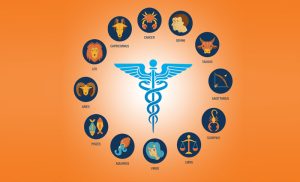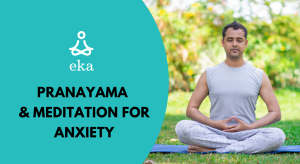Windows 7 Activate Download Free: Activate Your OS Without a Key
If you are looking to activate your Windows 7 operating system without a key, you have come to the right place. There are several methods available, including the use of a windows 7 activator or a windows 7 activation tool. These tools can help you bypass the activation process, allowing you to use your OS without any restrictions.
One popular method is the windows 7 activation bypass. This technique allows users to activate their system without needing a product key. It is important to note that using such methods may not be legal in all regions, so be sure to check your local laws before proceeding.
For those who want to explore options for windows 7 activation without key, there are various resources available online. Many users have successfully used these methods to activate their systems. Additionally, you can find windows 7 activation free download options that provide the necessary tools to help you activate your OS.
How to Use Windows 7 Activator Tools to Activate Windows 7
Using Windows 7 activator tools can help you activate your operating system easily. There are different windows 7 activation methods and techniques available. These tools are designed to make the activation process simple and effective.
You can find various windows 7 activation utilities and software that can assist you in this process. These tools can help you unlock the full potential of your Windows 7 system without needing a product key.
Step-by-Step Installation Process
- Download the Windows 7 Loader: This is a popular tool for activation.
- Run the Windows 7 Crack: Make sure to follow the instructions carefully.
- Apply the Windows 7 Patch: This step is crucial for successful activation.
- Use the Windows 7 Activation Script: This script will finalize the activation process.
Following these steps will help you activate your Windows 7 system smoothly.
Other Activation Tools for Windows 7
There are many other activation tools you can use for Windows 7. Here are some options:
- Windows 7 Activation Free Tool: This tool is available for users who want a no-cost solution.
- Windows 7 Activation Workaround: This method can help if other tools do not work.
- Windows 7 Activation Solution: A comprehensive tool that covers various activation needs.
- Windows 7 Activation Tool Download: You can find this tool online for easy access.
These tools provide different ways to activate your Windows 7 system.
Why Choose KMSPico for Windows 7 Activation?
KMSPico is a popular choice for many users. Here are some reasons to consider it:
- Windows 7 Activation Hack: This tool is known for its effectiveness in bypassing activation.
- Windows 7 Registration Bypass: It allows you to skip the registration process easily.
- Windows 7 Unlocker: This tool helps unlock features that are otherwise restricted.
- Windows 7 Activation File: It provides the necessary files for successful activation.
Choosing KMSPico can be a great option for activating your Windows 7 system.
Installation & Setup Guide for Windows 7 Activator
To install and set up a Windows 7 activator, you need to follow a few simple steps. This guide will help you understand how to use the windows 7 activation tool effectively.
Make sure to download the right version for your system. You can find the windows 7 activator free download for 32-bit 64 bit offline installer online. This will ensure that you have the correct software for your operating system.
Windows 7 Activator Free Download for 32-bit and 64-bit
When looking for a windows 7 activator free download 32 bit or windows 7 activator free download 64 bit, it’s important to choose a reliable source. Here are some steps to follow:
- Choose the Right Version: Make sure you select the correct version for your system.
- Download the Activator: Click on the download link and save the file to your computer.
- Run the Installer: Open the downloaded file and follow the on-screen instructions.
- Activate Windows: Once installed, use the activator to unlock your windows 7 full version unlock.
Windows 7 Activator Download Zip File
You might also find a windows 7 activator download zip file. This file usually contains the necessary windows 7 activation software. Here’s how to use it:
- Extract the Zip File: Right-click on the zip file and select “Extract All.”
- Locate the Activation Software: Open the extracted folder to find the activation utility.
- Run the Activation Tool: Double-click the activation software to start the activation process.
- Follow Instructions: Make sure to follow any prompts to complete the windows 7 activation free download.
Windows 7 Activator Free Download 64-bit
For those using a 64-bit system, the windows 7 activator free download 64 bit is essential. Here’s how to get it:
- Find a Trusted Source: Look for a website that offers the windows 7 activation tool download.
- Download the File: Click on the download button for the 64-bit version.
- Install the Activator: Open the downloaded file and follow the installation steps.
- Activate Your System: Use the tool to perform the windows 7 64-bit activation successfully.
FAQs on Windows 7 Activator KMSPico
Many people have questions about using KMSPico for Windows 7 activation. Here are some common FAQs.
Is KMSPico Safe to Use for Activating Windows 7?
Using KMSPico can be a way to activate Windows 7, but safety is a big concern. Here are some points to consider:
- Windows 7 Activation Hack: KMSPico is often seen as a hack to bypass activation.
- Windows 7 Loader: This tool can help in the activation process but may come with risks.
- Windows 7 Crack: Cracking software can expose your system to malware.
Always be cautious when using such tools, as they can harm your computer.
Updates from Microsoft After Using KMSPico?
After using KMSPico, you might wonder about updates from Microsoft. Here are some things to keep in mind:
- Windows 7 Activation Method: KMSPico changes how your system is activated.
- Windows 7 Activation Technique: It may affect how updates are received.
- Windows 7 Activation Workaround: Some users report issues with updates after using KMSPico.
It’s important to check if your system continues to receive updates.
Windows 7 Download with Product Key Free
If you’re looking for a way to download Windows 7 with a product key for free, here are some options:
- Windows 7 Download with Product Key Free: This option is available but be careful about sources.
- Windows 7 Keygen: Some users look for keygens to generate product keys.
- Windows 7 License Removal: This can be part of the process if you want to use KMSPico.
Make sure to research and find safe methods for downloading and activating Windows 7.


























